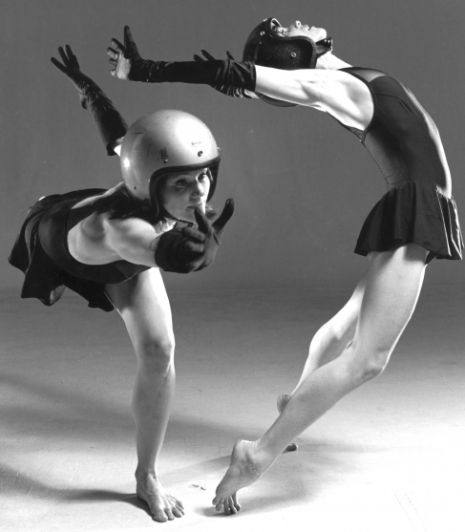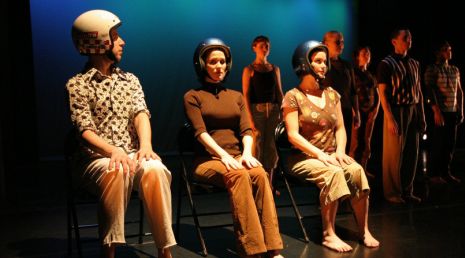Collaborations
Lucky Plush is an ensemble-based company that devises work through experimentation and play. As the director and primary creator of the work, I come to the rehearsal process with a strong sense of the physical vocabulary, theme, or story that I want to tell. I give the ensemble prompts to generate material from which I edit, shape, and build an overall arc. The ensemble is essential to the process of exploring, discovering and honing. One of my performers, Meghann Wilkinson, has worked with me since 2004, and our long-term collaboration is integral to my artistic journey.
I work with both movement and language because they tell different stories. Language grounds the abstraction of movement, frames thematic ideas, and develops complex relationships in ways that might feel demonstrative or reductive in dance. Like words, movement can be beautiful, grotesque, exhausting, uplifting, maddening, moving, transformative, and much more, yet it does these things in visceral ways that language cannot.
In most of my work, the performers are themselves onstage, speaking and responding as they would in everyday life. To be comfortable with this, we spend a lot of time in rehearsals telling each other stories. Sometimes I try to alter their experience by frustrating their storytelling with constant interruption or asking them to execute a movement phrase while telling the story. I find that states of physical exhaustion or disorientation prohibit the teller from ‘performing’ the story and trigger a more authentic experience.
Over the past couple of years, I’ve collaborated with theater director Leslie Buxbaum Danzig, which has been hugely inspiring and generative, because we share many values as creators of devised work. Committed to the integrity of each form, we’ve found that the borders and transitions between dialogue and movement create surprise, humor, accrual of tension, and release.
In my work with Leslie, one of our core questions has been “how do we earn the leap from dialogue to dance?” Once you introduce a character-driven plot, moving into dance can be jarring. In our work The Better Half (2011), we found an effective slippage of dance and theater languages through the story’s plot. A performer playfully introduces the idea of searching for something by using a mimetic vocabulary. We show the audience to see the abstraction by progressing from the pedestrian action into dance. Another way I make ‘sense’ of both logics is to introduce both movement and text right away, so that audiences understand the rules of the work. I find that the multiple layers of meaning allow dance and text to play very well together.
Hybridity in my work often involves the integration of technology. My multi-year collaboration with video designer John Boesche underscores my interest in using video to strengthen a work's thematic and narrative connections in a way that is balanced with the live action. Our research for Punk Yankees (2009) centered on information sharing and YouTube, so I used computer terminals with internet access onstage, live feed cameras, and an ongoing Twitter feed where audience members could post comments at intermission.
Working with theater makers over the past several years, I’ve learned a number of practices that I hope to translate to my work. In theater, previews and extended runs are typical, allowing creators and performers to discover a work’s potential in front of multiple audiences. By contrast, in dance we often spend a year creating the work for what turns out to be a handful of shows, and the performances are often over before the work finds its rhythm. Theater companies regularly return to past work, valuing continued refinement and audience development. In dance, the focus is generally on the next major project; a phenomenon that is institutionally supported through grants that will only support the creation of new work.
When I formed Lucky Plush as a non-profit platform to support my work, I had no idea that the majority of my time would be spent administering, managing, and fundraising. To address this, I initiated Creative Partners, a new business model deeply connected to my artistic values. To address this, I initiated Creative Partners, a new business model deeply connected to my artistic values. Creative Partners is a collaborative effort to provide professional fundraising for three Chicago arts organizations: Lucky Plush Productions (dance), Blair Thomas & Co (theater), and eighth blackbird (music). Its focus on capacity building will allow the artists to focus on creating their work and being compensated a fair-wage for their time. Dance should – and can – be a viable way to make a living.




